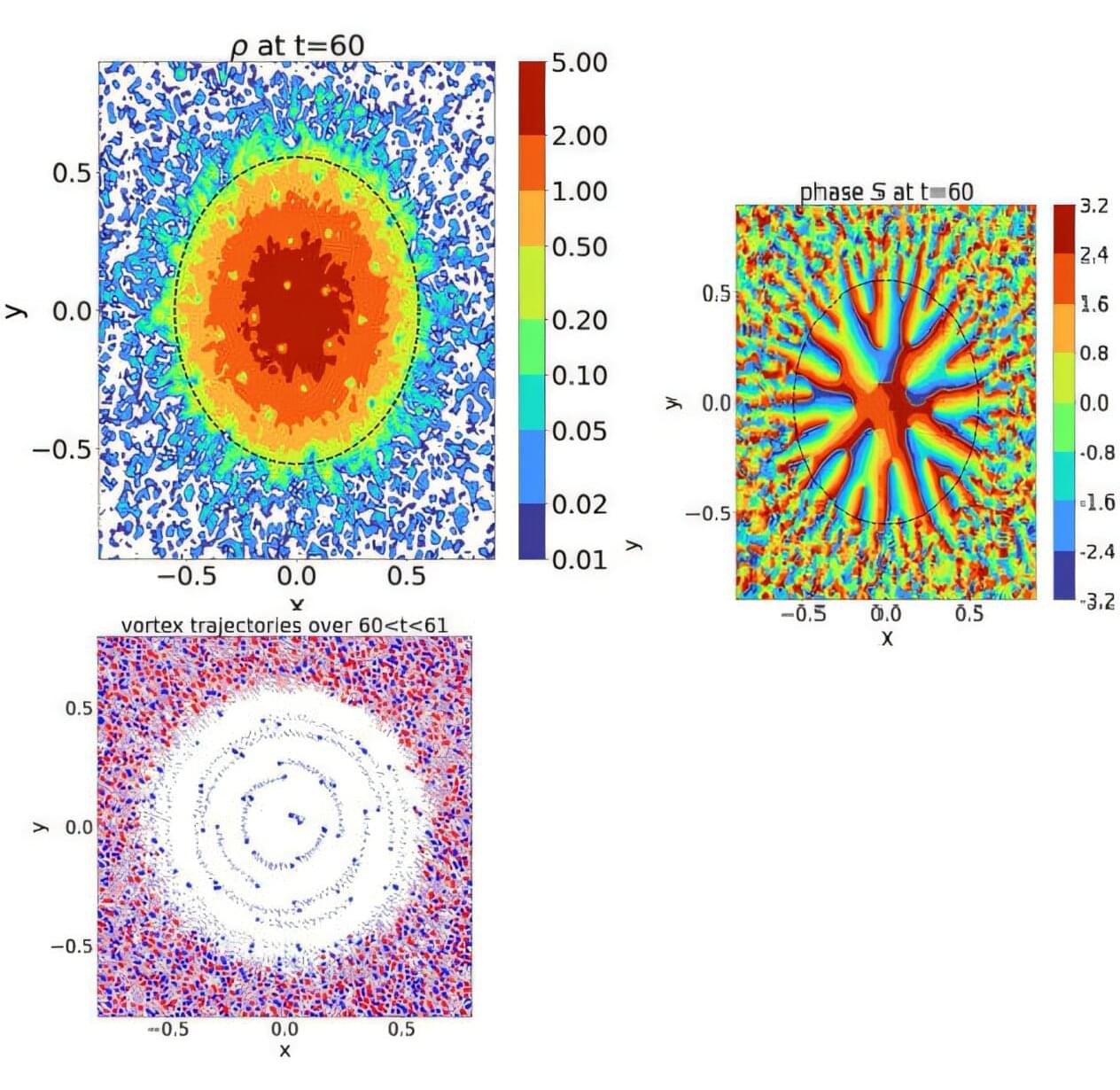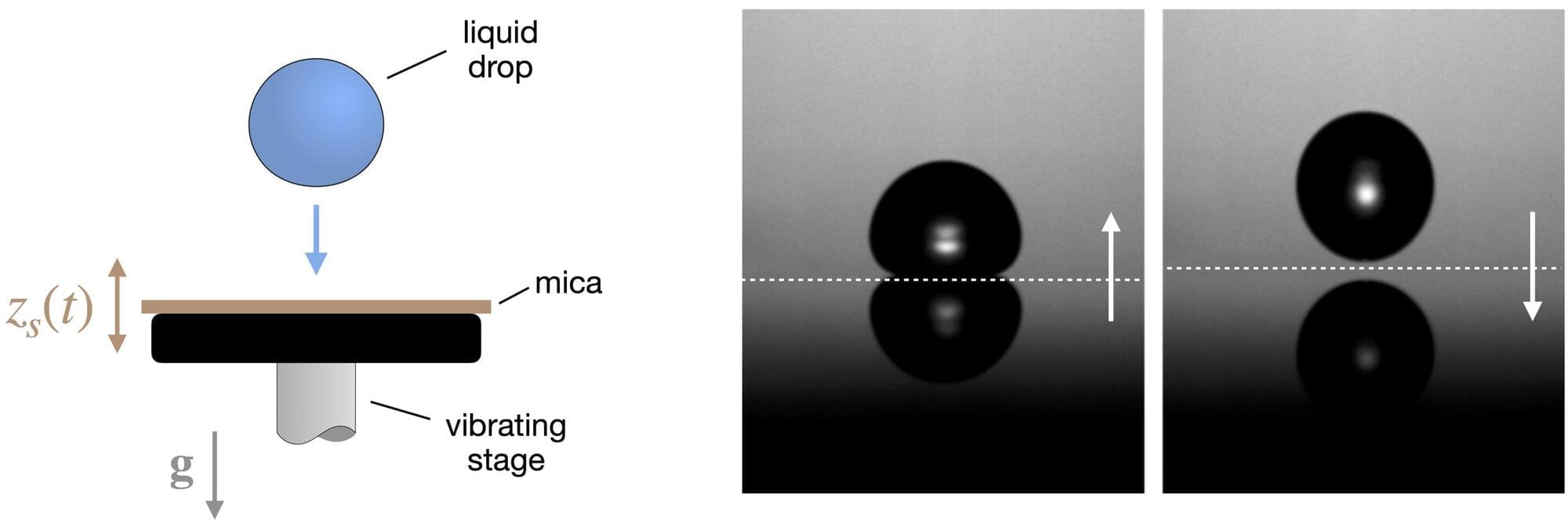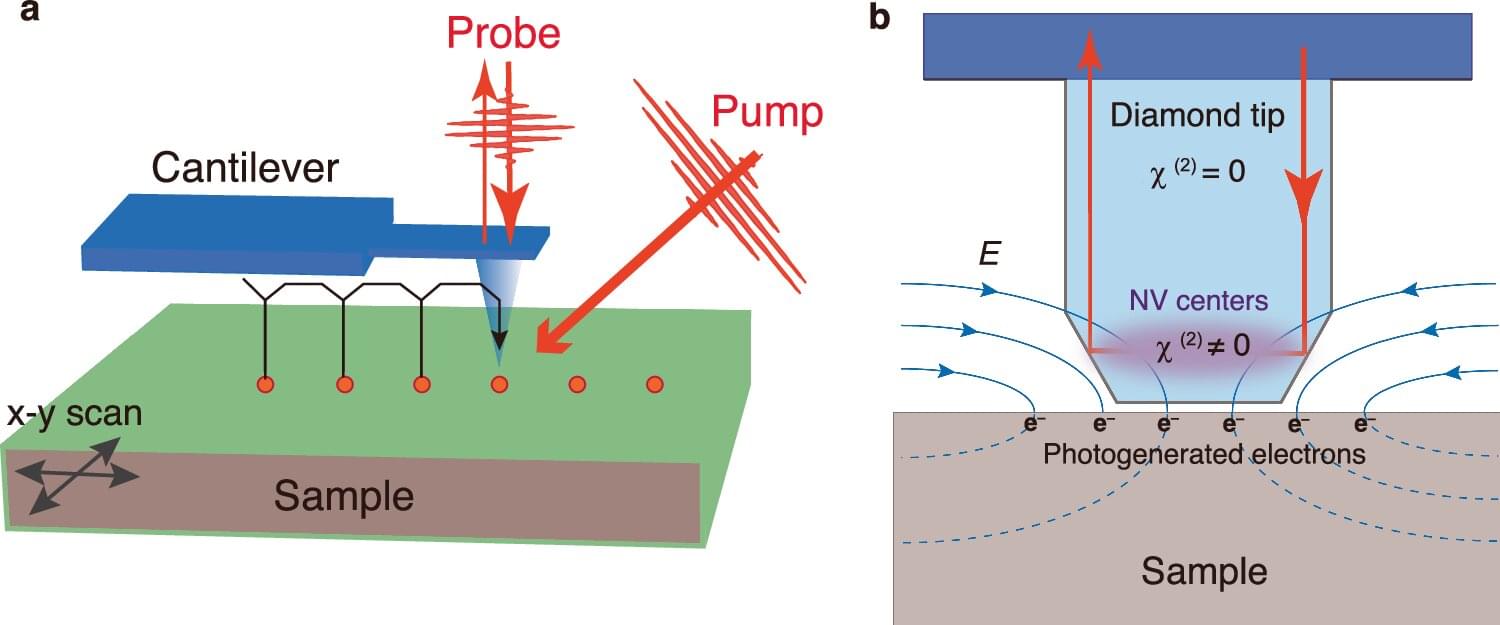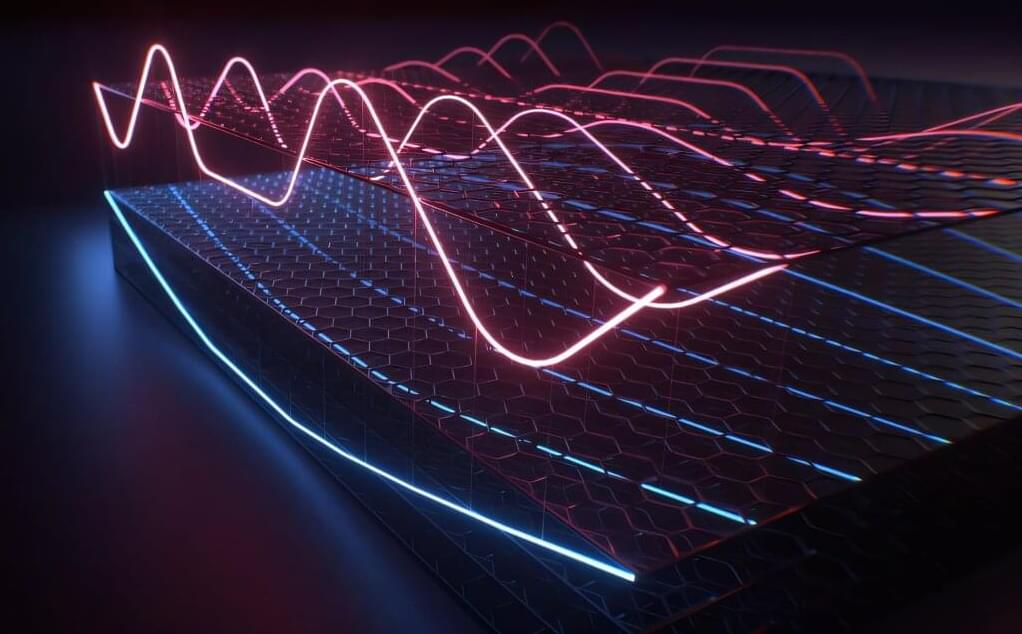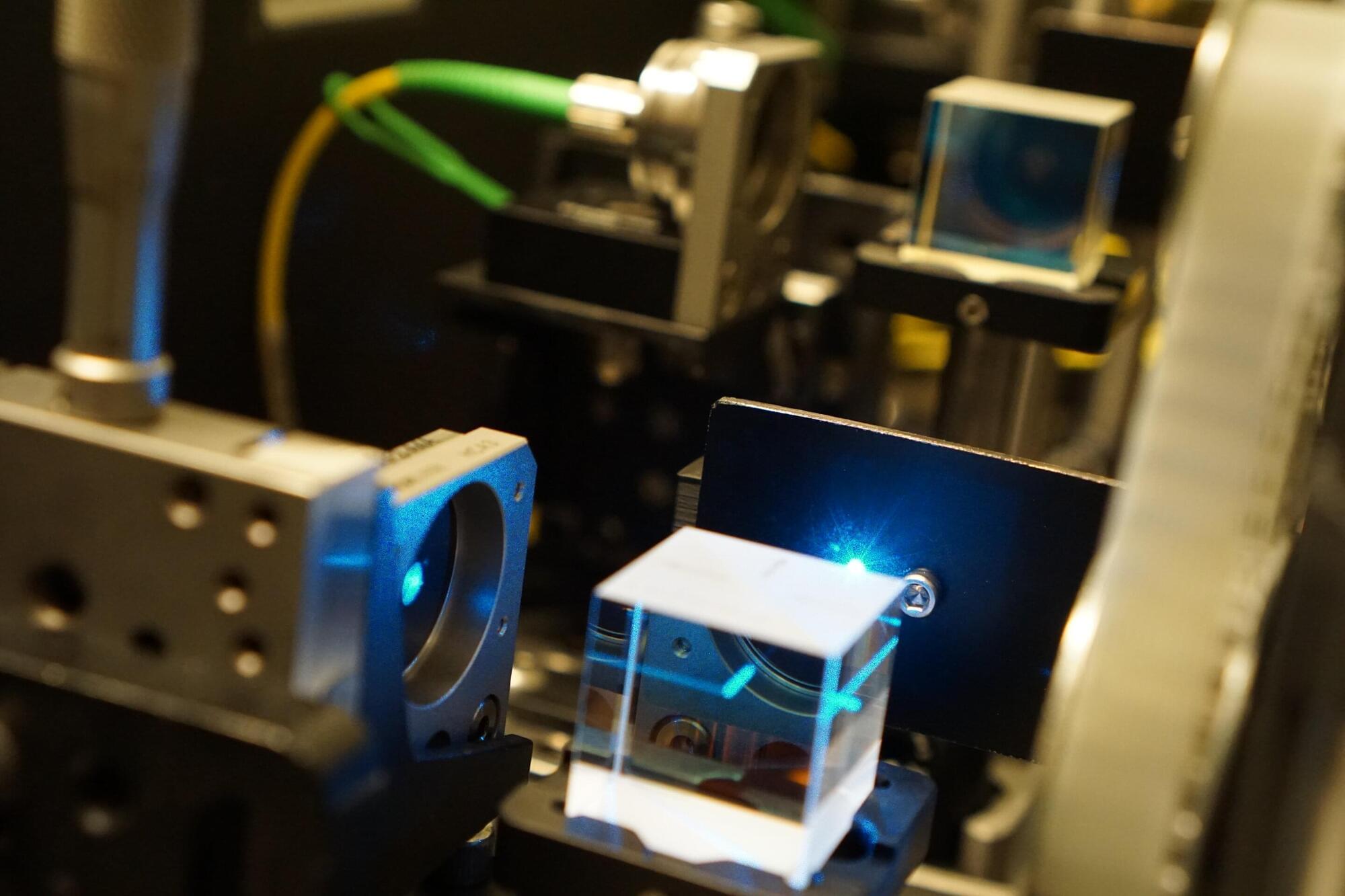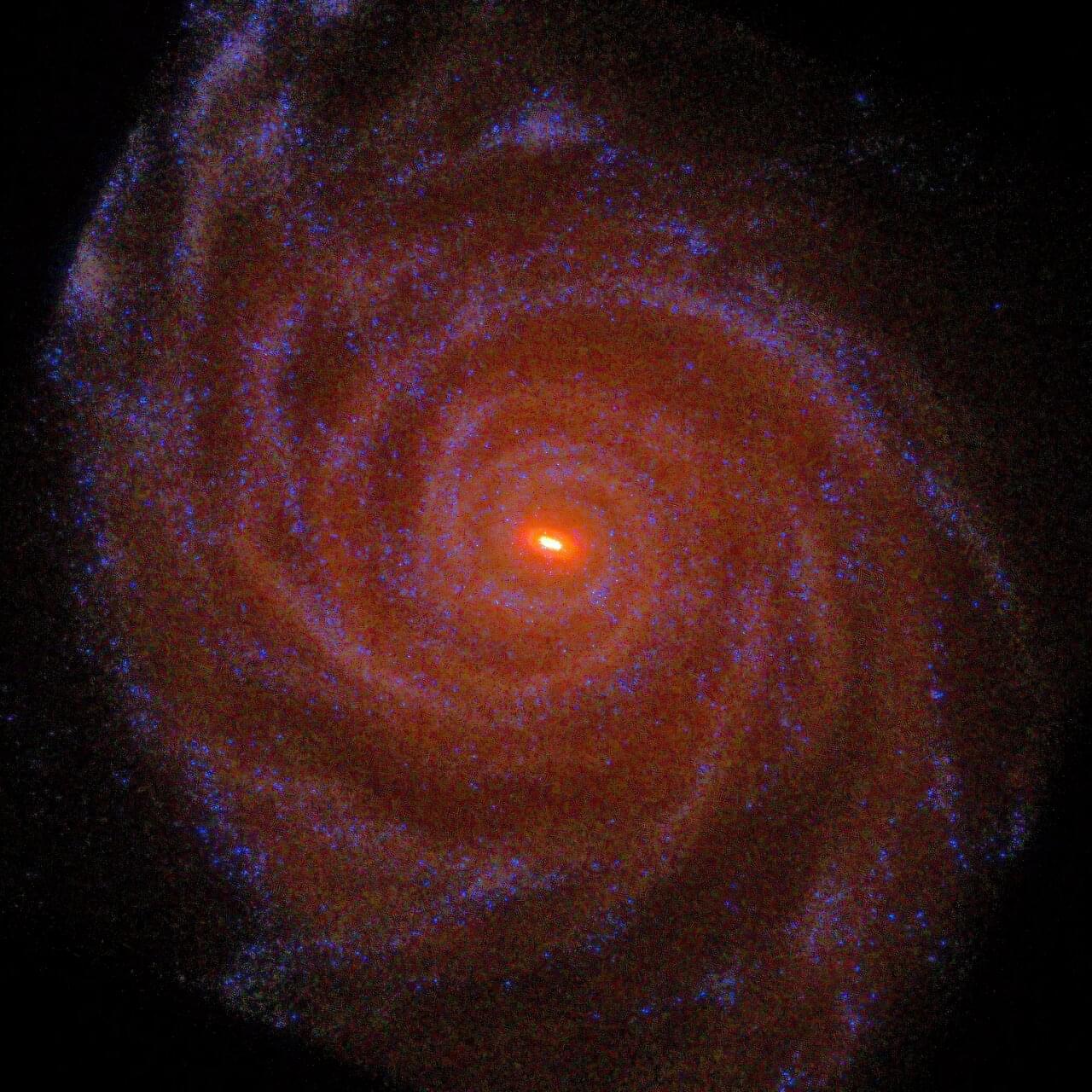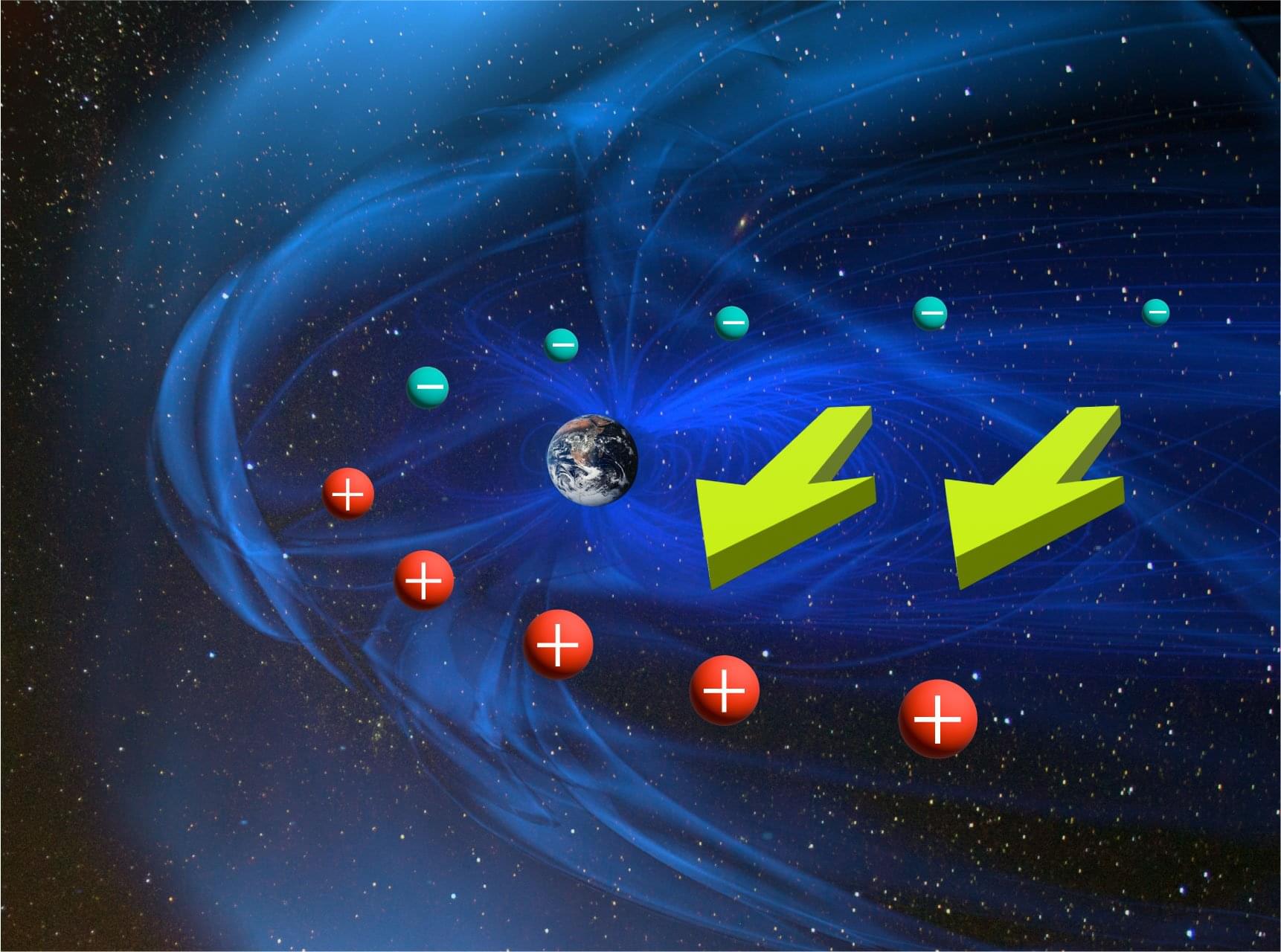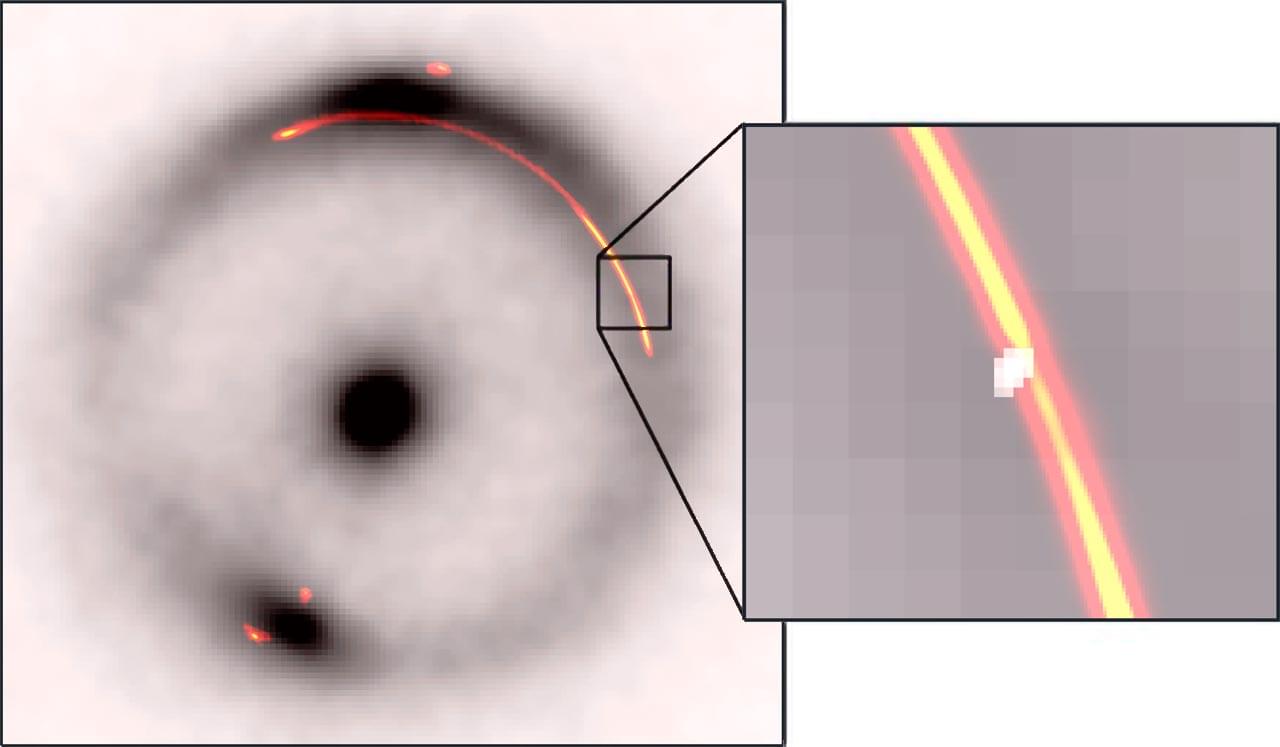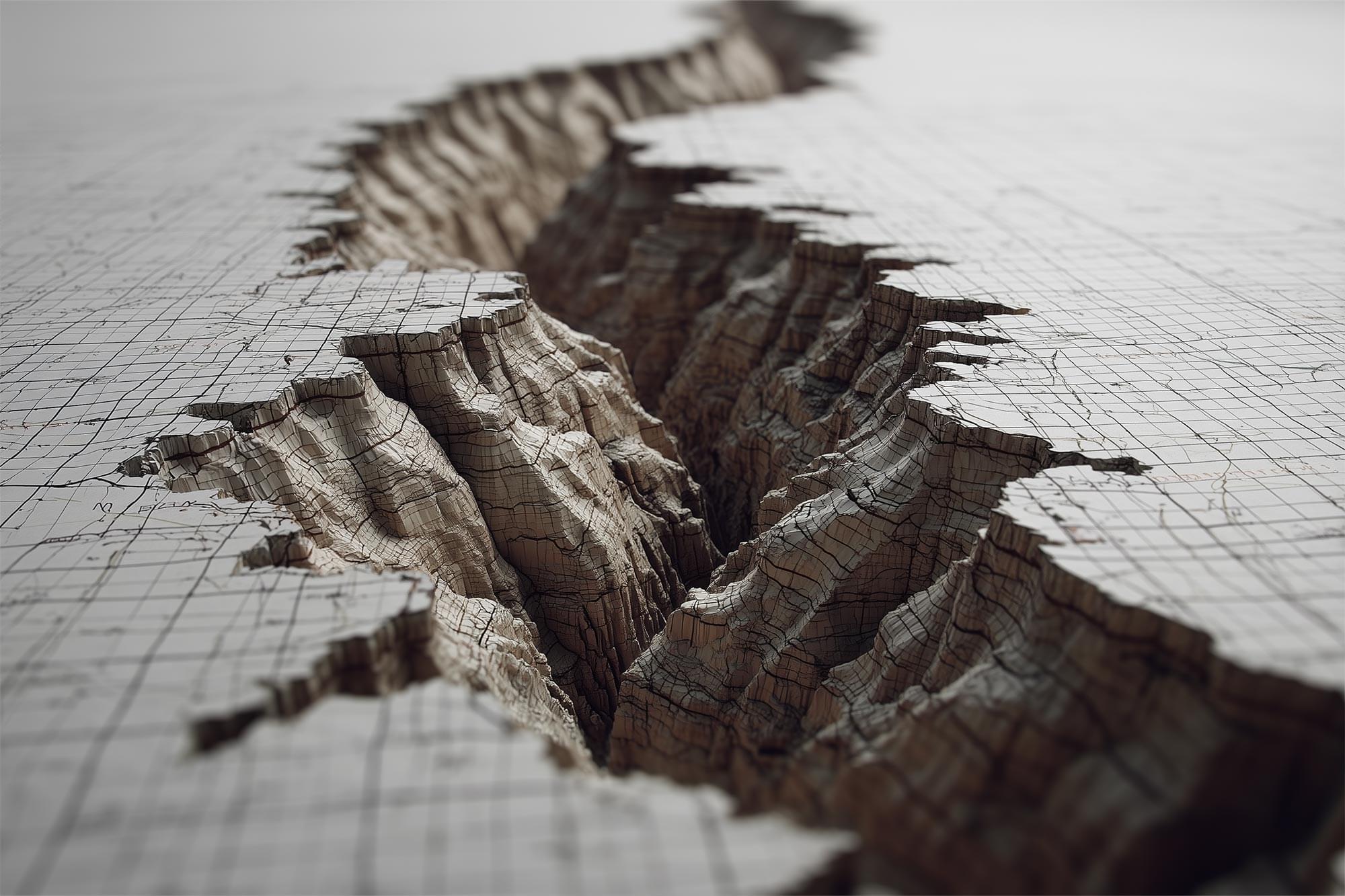The nature of dark matter remains one of the greatest mysteries in cosmology. Within the standard framework of non-collisional cold dark matter (CDM), various models are considered: WIMPs (Weakly Interacting Massive Particles, with masses of around 100 GeV/c2), primordial black holes, and ultralight axion-like particles (mass of 10-22 to 1 eV/c2). In the latter case, dark matter behaves like a wave, described by a Schrödinger equation, rather than as a collection of point particles. This generates specific behaviors at small scales, while following standard dynamics (CDM) at large scales.
Philippe Brax and Patrick Valageas, researchers at the Institute of Theoretical Physics, studied models of ultralight cold dark matter with repulsive self-interactions, whose dynamics are described by a non-linear variant of the Schrödinger equation, known as the Gross-Pitaevskii equation, also encountered in the physics of superfluids and Bose-Einstein condensates. In their work, the authors follow the formation and dynamics of particular structures, called “vortices” (whirlpools) and “solitons” (cores in hydrostatic equilibrium), within halos of rotating ultralight dark matter.
